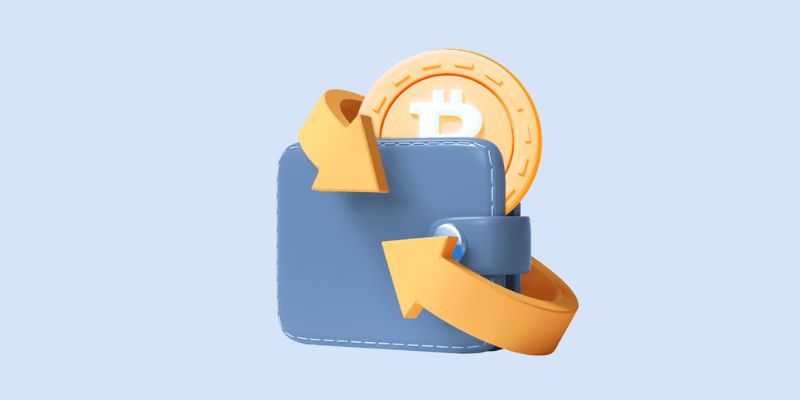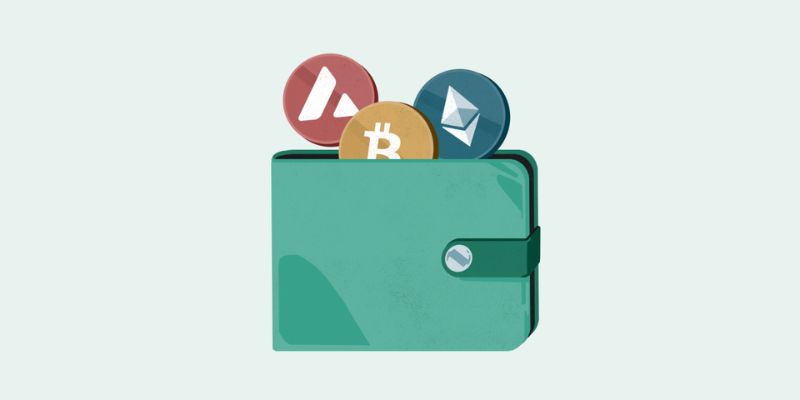Diving into the crypto world can feel like navigating a labyrinth, but it doesn’t have to. When you’re just starting out, finding the easiest crypto wallets to set up for beginners is your golden ticket to a stress-free experience. Stick with me, and I’ll walk you through the simplest options that ensure secure transactions without the hassle. Whether it’s choosing between hot and cold wallets or picking between software and hardware, I’ve got the breakdown to make your first steps in crypto as easy as snapping your fingers.
Understanding Crypto Wallet Types for Beginners
Comparing Hot and Cold Wallets
Finding where to keep your digital cash can be tricky. Let’s talk wallets. Not the leather kind. Digital wallets to keep your crypto safe and sound. You’ve got two main types: hot and cold wallets.
Hot wallets connect to the internet. Think of them like your everyday cash wallet. Easy for spending and getting coins. Yet, because they’re online, they are a bit more at risk. Hackers love to play, so hot wallets can draw them in.
Cold wallets stay offline. Picture a safe tucked away. Your crypto sits secure, away from prying eyes. Safer from hackers, cold wallets are the go-to for savings you want to tuck away.
For a beginner, think about what you want to do. If you’re trading often, hot wallets work well. For storing bigger amounts, cold wallets may be your friend.
Software vs. Hardware Wallets: Pros and Cons
Software wallets live on your devices. Phones or computers, they’re handy and often free. With a few taps or clicks, you’re ready to start. But be careful. Devices can get viruses or be hacked.
Hardware wallets are physical devices, like a USB stick. They hold your crypto offline which is pretty safe. To use it, you plug it in, do your thing, then out it goes. Real simple. Plus, no worries about viruses.
With software, the big win is convenience. You’re quick to trade, send, and receive coins. Plus, setting them up is easy as making a cup of tea. But there’s a cost. Because they’re online, your coins are at a higher risk.
Hardware wallets shine with security. Think of them as your personal crypto bank vault. They can be pricier, and not as quick to use, but your coins stay super safe.
So what’s best for a first-timer? Easy software wallets for daily use, hardware wallets for your crypto savings. Most important, pick one that fits how you’ll use your crypto. And don’t forget, security is key. Keep your wallet safe like you would your treasure.
Choosing your first wallet doesn’t have to be tough. Start simple, learn the ropes, and your crypto journey will be a smooth ride. Enjoy the adventure, and keep those coins secure!
Setting Up Your First Crypto Wallet
Step-by-Step Guide to Wallet Registration
When you start, choosing a beginner-friendly cryptocurrency wallet is key. Look for wallets labeled “for beginners” or “simple setup.” Trust me, you’ll want a no-hassle Ethereum wallet or a straightforward crypto wallet setup. Let’s dive into the easy steps to set up:
First, pick a wallet type. Mobile or desktop, both can be user-friendly blockchain wallets. For a phone, find a mobile app in your app store. If you’re on a computer, pick a trusted desktop wallet.
Now, download and install your wallet. Just follow the simple steps on-screen. They guide you through each part. No tech background needed!
Next, create your wallet account. You’ll usually hit a “create a new wallet” button. Then, set a strong password. This is important. Use numbers, letters, and special characters here.
Then, write down your recovery phrase. This is a bunch of words given by the app. It’s crucial for backup. Keep it secret, keep it safe.
Finally, confirm your email or phone if needed. Some wallets ask for this to verify your identity.
With these steps, you’ve got your wallet ready. Easy, right? Now, onto security, which is super critical.
Essential Security Measures During Setup
Security measures are a must for your peace of mind. Here’s what you need to do:
Always create a unique password. Not your birthday or 123456. Make it hard to guess.
Write down your recovery phrase and store it somewhere safe. This is your key to getting back in if locked out. Don’t skip this!
Turn on two-factor authentication (2FA) if your wallet offers it. This adds an extra check to make sure it’s you.
Never share your wallet info. This includes your password and recovery phrase. Only you should have these.
Back up your wallet. Some wallets offer an option to back up on your device. Use it. It’s like an extra safety net.
By following these steps and tips, you’ll have a secure, simple Bitcoin storage solution that’s perfect for beginners. You’re now set to join the world of digital currencies with safety and ease. Try it out with a small amount of crypto first. Get the hang of it. Then, as you get more comfortable, you can start exploring more features and maybe even add other currencies like Litecoin or different altcoins.
Remember, starting with crypto is a journey. You’re off to a great start by choosing an easy-to-use wallet and paying attention to security. Every good crypto experience begins here, so well done for taking the first steps with confidence!
The Top User-Friendly Crypto Wallets Available
Mobile and Desktop Wallets for Easy Access
Finding user-friendly blockchain wallets is key for beginners. Let’s look at some top picks. Mobile cryptocurrency wallets offer easy use anytime. For your phone, Trust Wallet is a no-brainer. It’s free and supports many coins. No frills, just simple Bitcoin storage solutions. It also has a dApp browser for more uses.
For desktops, Exodus is perfect for novices. You can swap coins right in the app. It shows your portfolio in a snap too. And it’s not just Bitcoin here. You get a whole lot of altcoins as well. It’s one of the best starter crypto wallets for sure.
What makes these options great is their step-by-step crypto wallet setup. These wallets guide you well in setting up digital currency wallets. They have clear prompts and helpful tips during the process. You don’t need a long crypto wallet guide. Just dive into the straightforward crypto wallet setup.
Highlighting Hardware Wallets for Enhanced Security
But what if you want an even safer spot? Enter hardware wallets. These are cold storage crypto wallets for newbies who prize security. Take the Ledger Nano X. It’s a secure and easy crypto wallet that connects to any computer. It’s compact, secure, and supports lots of assets.
Trezor is another good pick. It’s super simple, with an easy interface. Its screen shows transaction details for a quick double-check. It’s the kind of effortless Litecoin wallet we want. Both Ledger and Trezor offer clear, basic crypto wallet tutorials. These help in the uncomplicated crypto wallet registration process.
What’s core in choosing among beginner-friendly cryptocurrency wallets? Look for no-hassle Ethereum wallets or others that promise ease and security. Don’t rush. Take your time navigating cryptocurrency wallet options. Remember, crypto wallet security for starters can’t be taken lightly.
Always use backup strategies for crypto wallets. Think about what might happen if a device gets lost. Beginners should always back up their wallet details. Whether it’s on paper, USB drives, or somewhere safe online. It helps to keep your coins secure.
Remember, simple is best when you start. With the right wallet, crypto management for beginners can be a breeze. The aim here is to have clear, reliable, and easy-to-use tools for your crypto journey. Whether online or offline, securing and using your digital cash should feel second nature.
In the end, it’s about what fits your lifestyle best. Do you need quick access on the go? Then, a mobile or desktop wallet might be your jam. If security is your top concern, a hardware wallet could be the better choice. Look around, and always pick the one that feels right. That’s the uncomplicated path to your first crypto wallet.
Managing and Securing Your Digital Assets
Best Practices for Crypto Wallet Backup
Let’s dive right in! You just jumped into the crypto pool–time to keep your assets safe. First things first, back up your wallet. It’s like making a spare key for your car. For starters, write down your recovery phrase. Keep it safe, like really safe. Think of it as a treasure map to your digital gold. Next, make copies. Not just any, but encrypted ones. Use a USB drive or a piece of paper, and store them in different places. A safe or a locker works great.
Now, let’s get technical but keep it easy. Backups should be offline if possible. This means not on your computer or phone. Why? Because offline is out of reach for online thieves. Try a paper wallet or a hardware wallet for this. Yep, just like it sounds, a paper wallet is your info printed on paper. A hardware wallet is like a USB stick, but for your crypto coins. They both keep your backup away from hacks and glitches.
So, remember, back up, make copies, keep them offline. Simple, right?
Tips for Maintaining Wallet Security Over Time
Your wallet’s safe for now but keeping it that way takes a little work. First up, update regularly. Wallet software gets better, safer. Like updating apps on your phone, always click ‘yes’ when it’s time to update your wallet software.
Next, watch out for phishing. No, it’s not fishing with an ‘f’. Scammers might try tricking you into giving them your info. Those emails that look legit but ask for your keys? Big red flag! Never share your keys or recovery phrases. Not with anyone.
Use strong passwords, too. No ‘password123’ here, please. The more random, the stronger, like a mix of letters, numbers, symbols. Tough to guess means tough to crack. Oh, and don’t use your birthday or your dog’s name.
Lastly, consider multi-signatures. Fancy name, simple idea. It’s like a shared bank account, but you need two or more ‘signatures’ to make a transaction. It’s extra protection because if one key is stolen, your crypto isn’t going immediately with it.
Even a tech wizard checks their spells, so keep an eye on your security. Update, dodge those phishers, get creative with passwords, and maybe buddy up with multi-signatures. Treat these tips as your crypto life rules.
Cryptocurrency can be fun, and you can stay chill if you’ve got your security game on point. Set up is just the beginning. Keep learning, and you’ll be a pro in no time. Keep your digital treasure locked tight, and you can sail the high seas of crypto with a grin.
We’ve covered a lot in this post, from different types of crypto wallets to setting them up, and how to keep your digital assets safe. Picking between hot and cold wallets, or software versus hardware, depends on your needs. Each has its pros and cons. Remember, the right setup is crucial for security, so follow the step-by-step guide and don’t skip on safety steps.
For ease of access, mobile and desktop wallets work great. But if tight security is your aim, hardware wallets are top-notch. No matter which you choose, back it up and stay vigilant with your wallet’s security. How you manage your crypto can make all the difference. Stay smart and keep learning—it’s the best way to protect your digital treasures.
Q&A :
What are the top easy-to-use crypto wallets for beginners?
For beginners stepping into the world of cryptocurrencies, it’s essential to find a user-friendly wallet. Digital wallets popular for their ease of use include Coinbase Wallet, which offers a simple setup and an intuitive interface, and Exodus Wallet, acclaimed for its slick design and straightforward navigation. Blockchain Wallet is also highly regarded for new users due to its robust security features and easy-to-understand functionality.
How do you set up a beginner-friendly crypto wallet?
Setting up a beginner-friendly crypto wallet typically involves a few straightforward steps: choosing a reliable and simple wallet service, downloading the application, creating an account, and setting up strong security measures like a complex password and two-factor authentication. It’s critical to follow the specific instructions provided by the wallet service, and always remember to secure and backup your private keys or recovery phrases.
What features should beginners look for in their first crypto wallet?
Beginners should prioritize wallets with a user-friendly interface, strong security protocols such as two-factor authentication, and a recovery system to regain access if necessary. Additionally, opting for wallets that offer customer support can be beneficial for newcomers navigating their first transactions. Compatibility with various cryptocurrencies and ease of making transactions are also important features to consider.
Are there any free crypto wallets suitable for beginners?
Yes, there are several free crypto wallets that are suitable for beginners. Many of these offer a balance between ease of use and robust security. Some of the most recommended free wallets include Trust Wallet, which is mobile-friendly and supports a wide range of cryptocurrencies, and Electrum, which, while more geared towards Bitcoin, is renowned for its simplicity and has been a secure option for novice users for many years.
Can beginners use hardware wallets, or should they stick to software wallets?
Beginners can use hardware wallets, such as Ledger or Trezor, which are known for their high level of security. However, hardware wallets can be slightly more complex to set up and use when compared to software wallets. For those just starting out, it might be advisable to begin with software wallets since they are generally more accessible and easier to navigate, then move on to hardware wallets as they become more comfortable with crypto transactions and security. Follow Make Millions With Coin to update the latest information about crypto.





